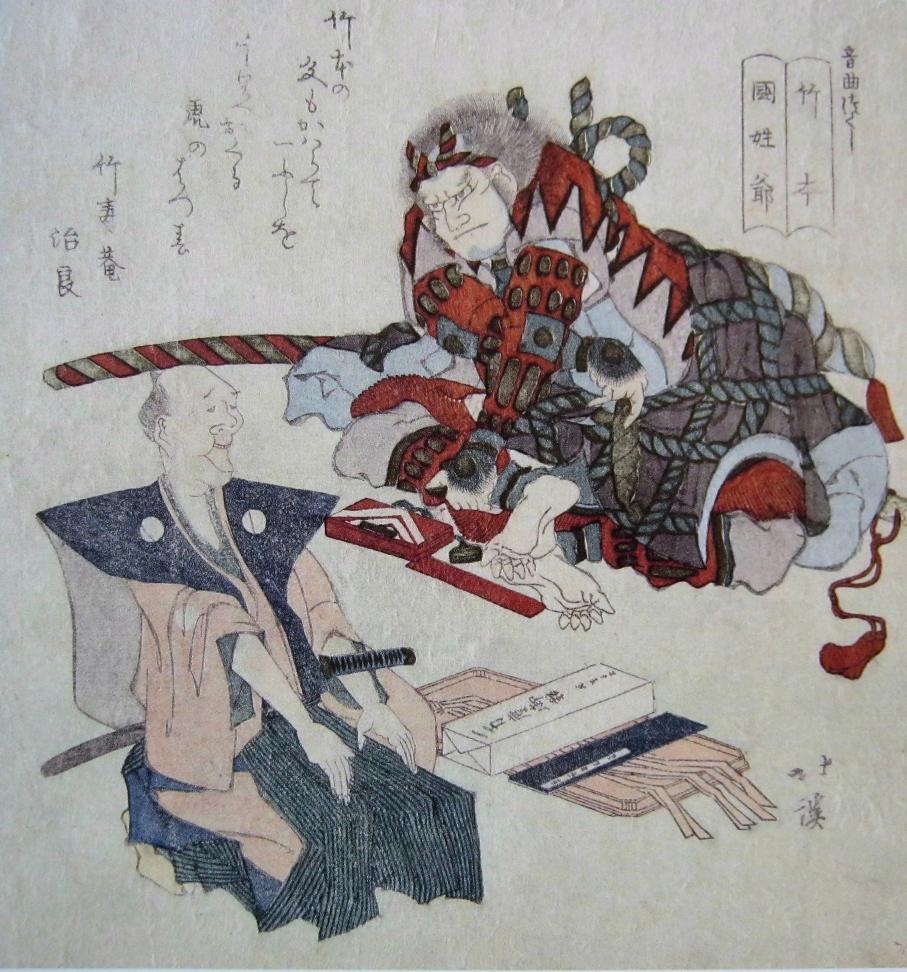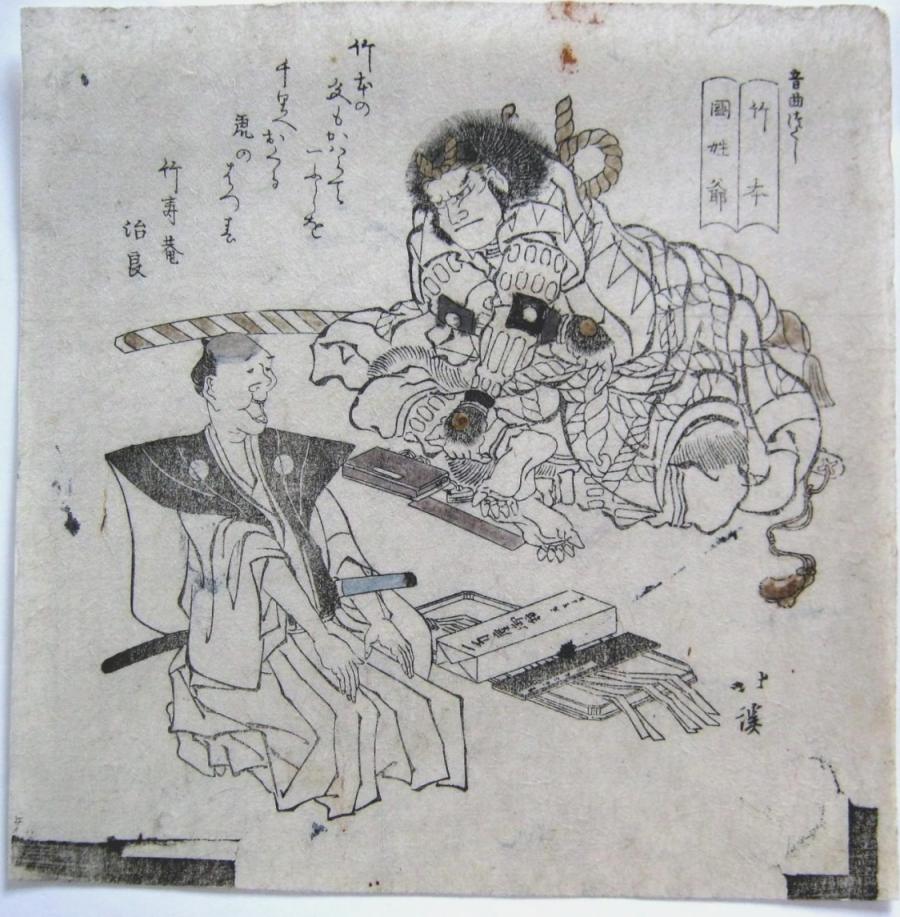
JAPANESE PRINTS
A MILLION QUESTIONS
TWO MILLION MYSTERIES
Ukiyo-e Prints浮世絵版画 |
|
formerly Port Townsend, Washington now Kansas City, Missouri |
|
|
Totoya Hokkei |
|
|
|
魚屋北溪 |
|
|
|
1780-1850 |
|
|
|
Watōnai with a chanter of the Takemoto school |
|
|
|
Surimono keyblock print |
|
|
|
Size: 8" x 8" |
|
|
|
Date: 1818 |
|
|
|
Signed: Hokkei |
|
|
|
Privately printed |
|
|
|
Condition: Full size, minor soiling, album backing. |
|
|
|
NO LONGER AVAILABLE! |
|
|
|
|
|
|
|
|
|
|
|
|
|

|
A Jōruri chanter of the Takemoto school is juxtaposed with Watōnai, the main character and hero of the puppet drama Kokusenya kassen (The Battles of Coxinga; 1715). The play was written by Chikamatsu Monzaemon (1653-1725), loosely based on the life and adventures of the Chinese general Coxinga (J. Kokusenya; C. Guoxingye, the nickname of Zheng Chenggong; 1624-62), who opposed Qing rule and eventually became ruler of Taiwan. In the play, Watōnai whose name implies 'between China and Japan', is a son of a Japanese mother and Chinese father. He is born in a Japanese fishing village and is raised as a fisherman but eventually travels to the continent, receives the name Kokusenya, repels Qing forces in a series of battles, and restores the Ming emperor to the throne. The playwright wrote several dramas specifically for the renowned chanter Takemoto Gidayū (1651-1714). In the poem, iro refers to the 'colour' of bamboo (take, as part of Takemoto), as well as the 'tone or chanting style' (fushi no iro) of hte Takemoto school. In the context of Jōruri, iromeans a special style between chanting and monologue.
tsuki no na no Tarō Jirō mo oshimarete Tōdo e haru o utsusazu mogana
I would miss the first and second months, name Tarō and Jirō, and hope that spring does not move to China. -Tōkeien Matomo
Takemoto no iro mo kawarade hitofushi o senri e okuru tora no hatsuharu
Without changing the Takemoto tenor, a song is sent as far as a thousand leagues in early spring of the tiger. -Chikujuan Jirō
The above information is taken directly from Reading Surimono: The Interplay of Text and Image in Japanese Prints edited by John T. Carpenter, p. 203. |

